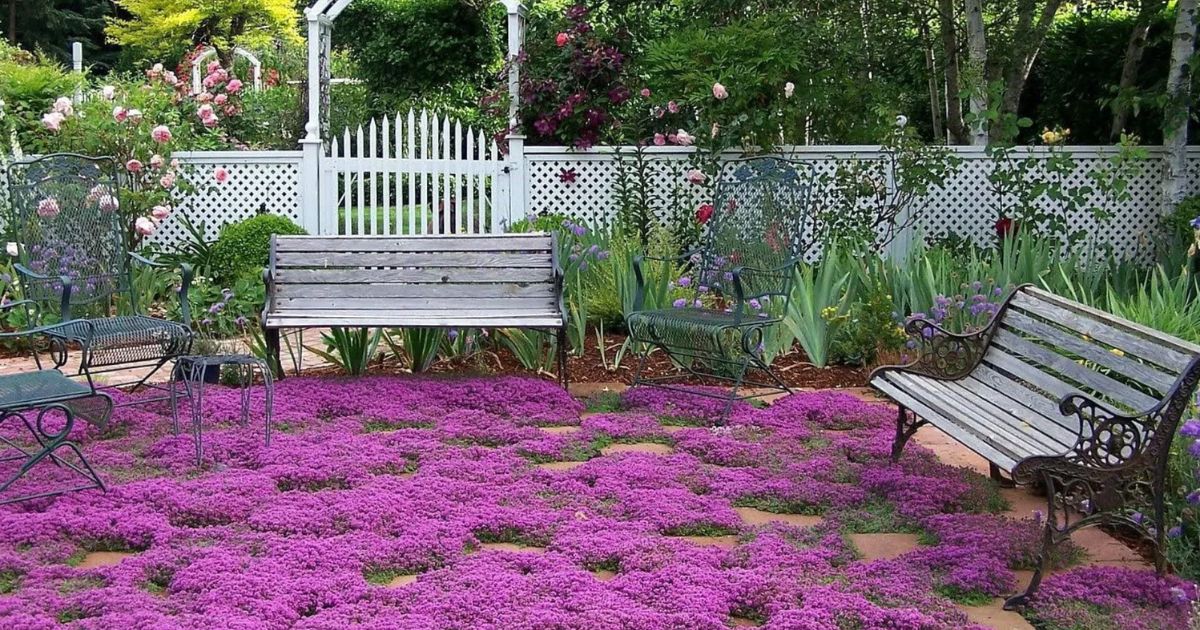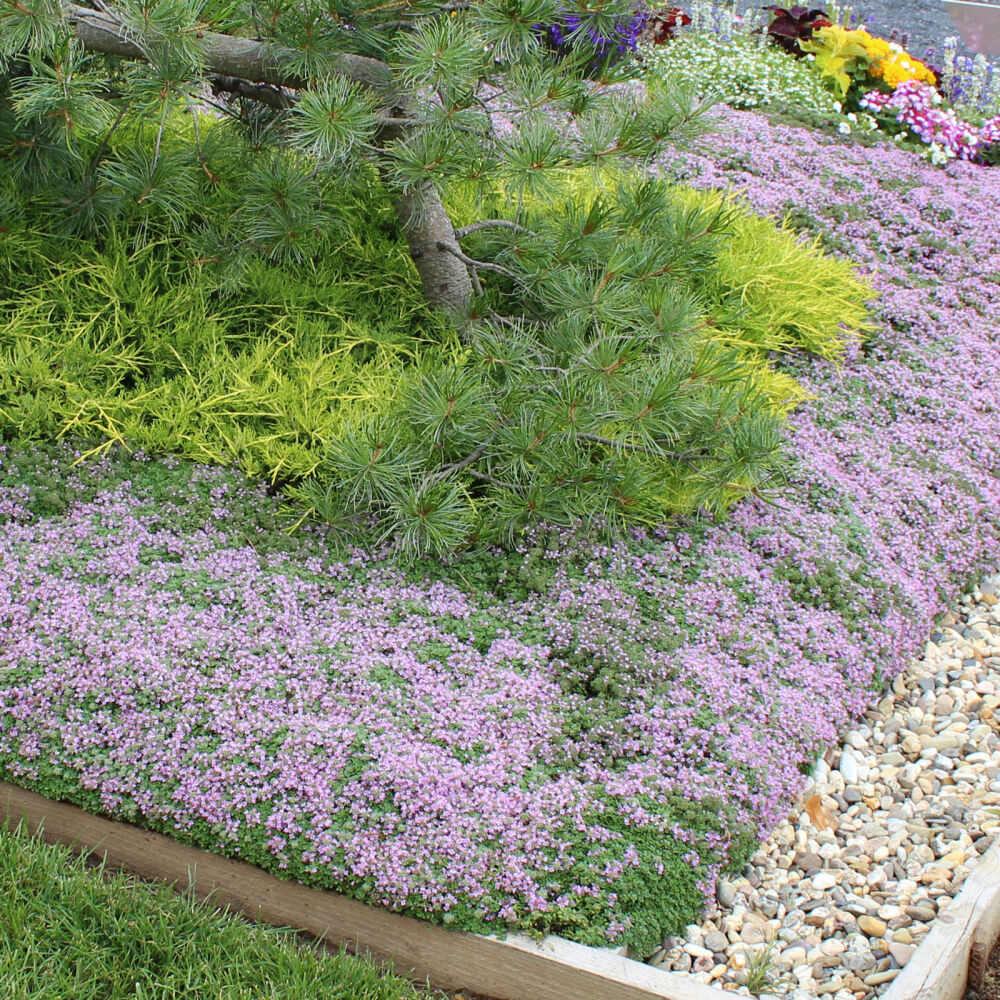The Rise of Eco-Friendly Lawns
The traditional grass lawn, once a staple of suburban landscapes, is facing a revolution. Homeowners and landscapers are increasingly turning to eco-friendly alternatives that reduce environmental impact while providing a unique aesthetic appeal. This shift towards sustainable landscaping is driven by the need to conserve water, reduce chemical usage, and create habitats for beneficial insects. One such alternative, the creeping thyme and clover lawn, has gained popularity for its low-maintenance requirements and ability to thrive in challenging conditions. As the trend towards eco-friendly lawns continues to grow, it’s essential to explore the benefits of using low-maintenance alternatives to traditional grass lawns.
Why Creeping Thyme and Clover are Taking Over
Creeping thyme and clover are rapidly gaining popularity as a low-maintenance alternative to traditional grass lawns. One of the primary advantages of these plants is their exceptional drought tolerance, allowing them to thrive in areas with limited water supply. Additionally, they require minimal mowing, reducing the need for frequent lawn maintenance. Another significant benefit is their ability to outcompete weeds, eliminating the need for herbicides and other chemicals. Furthermore, creeping thyme and clover lawns are highly resistant to pests and diseases, reducing the need for pesticides and fungicides. With their numerous benefits, it’s no wonder that creeping thyme and clover lawns are becoming the go-to choice for homeowners and landscapers seeking a sustainable and eco-friendly option.
How to Create a Lush Creeping Thyme and Clover Lawn
Creating a thriving creeping thyme and clover lawn requires careful planning and attention to detail. To get started, prepare the soil by removing any debris, tilling to a depth of 8-10 inches, and adding organic matter such as compost or well-rotted manure. Next, sow the creeping thyme and clover seeds at a rate of 1-2 pounds per 1,000 square feet, raking them in gently to ensure good contact with the soil. Water the area thoroughly, keeping the soil consistently moist during the first few weeks after sowing. As the plants establish, reduce watering to once or twice a week, depending on weather conditions. To maintain a healthy and dense creeping thyme and clover lawn, mow occasionally to encourage spreading, and fertilize lightly with a balanced, slow-release fertilizer. With proper care and attention, a creeping thyme and clover lawn can provide a beautiful, low-maintenance alternative to traditional grass lawns.
The Benefits of a Pollinator-Friendly Lawn
One of the most significant advantages of a creeping thyme and clover lawn is its potential to provide a habitat for pollinators. As bees, butterflies, and other beneficial insects face declining populations, it’s essential to create environments that support their survival. Creeping thyme and clover lawns offer a perfect solution, as they produce an abundance of nectar-rich flowers that attract pollinators. By incorporating these plants into your lawn, you’ll not only create a beautiful and low-maintenance outdoor space but also contribute to the preservation of these vital species. Additionally, a pollinator-friendly creeping thyme and clover lawn can increase local biodiversity, supporting a healthier ecosystem and more resilient environment. By making the switch to a creeping thyme and clover lawn, you’ll be doing your part to protect the planet’s precious pollinators and promote a greener future.
Comparing Creeping Thyme and Clover to Traditional Grass Lawns
When considering a switch to a creeping thyme and clover lawn, it’s essential to weigh the costs, maintenance requirements, and environmental impact against those of traditional grass lawns. In terms of costs, creeping thyme and clover lawns require minimal investment in seeds, soil preparation, and initial maintenance, making them a more affordable option in the long run. Traditional grass lawns, on the other hand, demand regular mowing, fertilizing, and pest control, resulting in higher annual expenses. Additionally, creeping thyme and clover lawns are more drought-tolerant, reducing the need for frequent watering and subsequent water bills. In terms of maintenance, creeping thyme and clover lawns require occasional mowing and weeding, whereas traditional grass lawns need regular mowing, edging, and pruning. Furthermore, creeping thyme and clover lawns are more resistant to pests and diseases, reducing the need for chemical treatments and their associated environmental risks. Finally, creeping thyme and clover lawns have a significantly lower carbon footprint than traditional grass lawns, as they require less water, mowing, and fertilizing. By making the switch to a creeping thyme and clover lawn, homeowners can enjoy a more sustainable, cost-effective, and environmentally friendly outdoor space.
Debunking Common Myths About Creeping Thyme and Clover Lawns
Despite the growing popularity of creeping thyme and clover lawns, some misconceptions still surround these eco-friendly alternatives. One common myth is that creeping thyme and clover lawns are unattractive or weedy-looking. In reality, a well-maintained creeping thyme and clover lawn can be a stunning addition to any outdoor space, with its vibrant flowers and lush foliage. Another myth is that these lawns are not durable and cannot withstand foot traffic. However, creeping thyme and clover are surprisingly resilient and can tolerate moderate foot traffic, making them an excellent choice for families with children or pets. Some people also believe that creeping thyme and clover lawns require frequent watering and maintenance. On the contrary, these lawns are drought-tolerant and require minimal upkeep, making them an ideal option for busy homeowners. By understanding the facts about creeping thyme and clover lawns, homeowners can make an informed decision about switching to a more sustainable and low-maintenance outdoor space. With their numerous benefits and advantages, creeping thyme and clover lawns are an excellent choice for those looking to create a greener, more eco-friendly future.
Designing a Beautiful and Functional Creeping Thyme and Clover Lawn
When it comes to designing a creeping thyme and clover lawn, the possibilities are endless. One of the key benefits of these low-maintenance alternatives is their versatility, allowing homeowners to get creative with their outdoor space. To create a visually appealing creeping thyme and clover lawn, consider incorporating other low-maintenance plants, such as succulents or sedums, to add texture and depth. Hardscaping features, like stone pathways or wooden benches, can also enhance the aesthetic appeal of the lawn. For a more rustic look, consider incorporating natural elements, like logs or boulders, into the design. To add a pop of color, plant a few flowering perennials, like coneflowers or black-eyed susans, throughout the lawn. When designing a creeping thyme and clover lawn, it’s essential to consider the specific needs of the plants, including sunlight, soil type, and watering requirements. By doing so, homeowners can create a beautiful and functional outdoor space that requires minimal upkeep. With a little creativity and planning, a creeping thyme and clover lawn can be a stunning addition to any home, providing a peaceful retreat from the hustle and bustle of daily life.
A Greener Future for Your Lawn and the Environment
As the world becomes increasingly aware of the importance of environmental sustainability, the shift towards eco-friendly lawns is gaining momentum. By switching to a creeping thyme and clover lawn, homeowners can make a significant impact on reducing their carbon footprint. With their low water requirements and ability to thrive in poor soil conditions, creeping thyme and clover lawns offer a sustainable alternative to traditional grass lawns. Additionally, these lawns require minimal mowing and maintenance, reducing the need for gas-guzzling lawn mowers and chemical fertilizers. By choosing a creeping thyme and clover lawn, homeowners can enjoy a beautiful and functional outdoor space while also contributing to a greener future for the environment. As the demand for sustainable landscaping solutions continues to grow, it’s clear that creeping thyme and clover lawns are here to stay. With their numerous benefits and advantages, it’s no wonder why these low-maintenance alternatives are becoming the go-to choice for environmentally conscious homeowners. By making the switch to a creeping thyme and clover lawn, homeowners can enjoy a peaceful retreat from the hustle and bustle of daily life while also doing their part for the planet.






